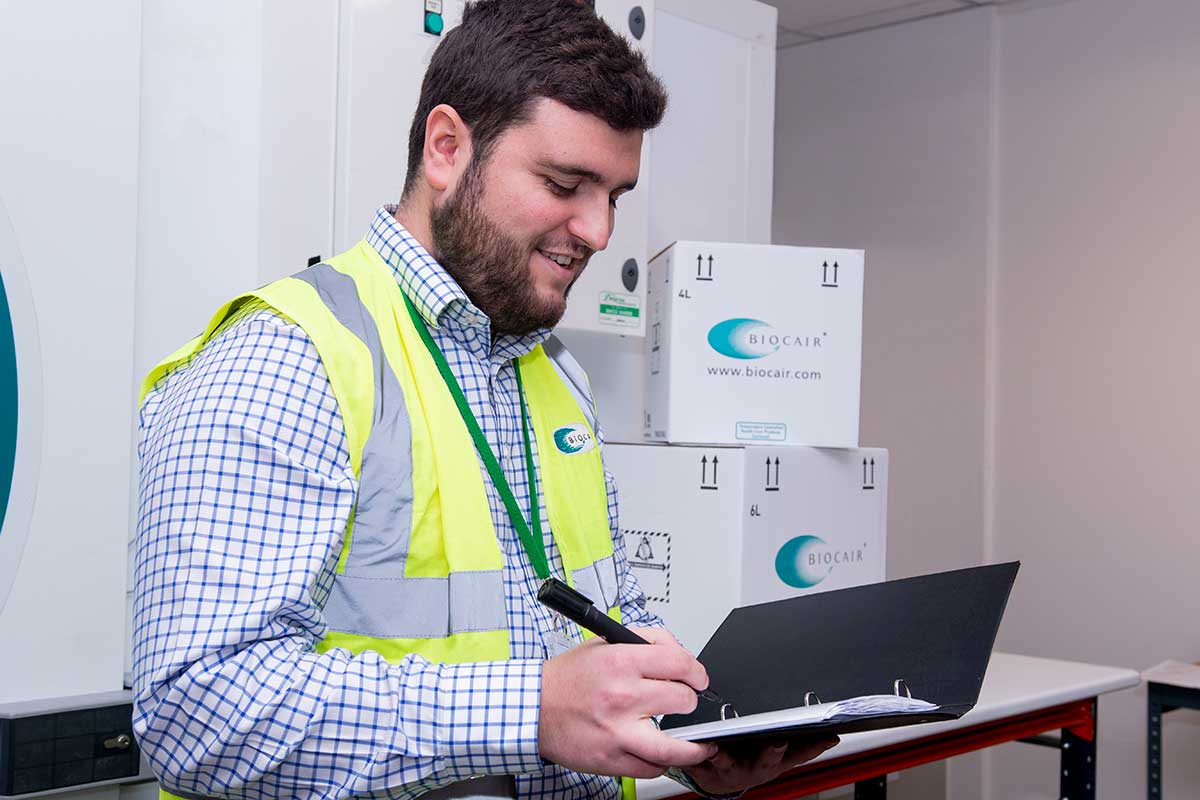In a recent webinar, we discussed five basic steps to ensure the swift, compliant and on-time delivery of temperature-controlled life science shipments.
James Shimmens, Client Relationship Manager based in Cambridge (UK), detailed five basic steps that will ensure safe and timely delivery for time and temperature-sensitive life science shipments.
The webinar is available to watch on-demand, or you can read a summary below of the key points.
1. Know your Admin
Knowing the nature of the commodity to be shipped, and its purpose at the end destination, can speed any material through the various stages of its journey.
Take into account:
- Customs regulations
- End use of the material
- Import/export permits and licenses
- Brokerage documentation
- Tax/duty declarations, trade tariffs and commodity codes.
While it may appear daunting, specialist support is available from our logistics experts to help guide you through the complexities of transporting biological or chemical materials.
2. Pack with Care
Knowing the potential hazards of the materials allows the sender to use the most appropriate packaging.
You would need to consider several factors, including temperature requirements, quantity/volume of samples and supply of dry ice (if appropriate).
It is also worth considering the environmental impacts - could you utilize reusable packaging instead of single use options?
Also, due to the nature of the materials, the packaging should be validated and certified prior to use – your logistics partner should be able to confirm this.
3. Understand your Incoterms
These are the rules governing the responsibilities of both buyers and sellers relating to delivery.
Overseen by the International Chamber of Commerce, incoterms operate in most areas of the global marketplace. Recognizing the relevant rights and responsibilities helps a business manage its logistics effectively.
4. Master Routing
Getting a shipment to its destination can be complex. Ask yourself the following questions:
- How urgent are these materials?
- What is the budget for sending these materials?
- Is the route likely to be impacted by temperature considerations?
- Would COVID-19 and/or Brexit affect the route?
Clarity on shipping routes can prevent delays.
5. Make use of Traceability
Knowing what information you can gather from a package can help you improve your logistical processes.
GPS tracking allows real-time package monitoring, while temperature tracking gives you a clear pattern of the shipment's temperature range during transit. This data can, in turn, help improve decisions about packaging and routes, which will create more efficient and robust logistical processes in the future.
For more information about Biocair’s services please contact your local office.
James Shimmens
Customer Relationship Manager, Biocair UK
Based in Cambridge (UK), James manages a team of Customer Service and Logistics Specialists. With over 10 years of international shipping experience James has dealt with a wide range of materials ranging from cell and gene therapies through to dangerous goods, including Class 7. James is also a point of contact for key clients globally who ship internationally and domestically or require shipping advice.
